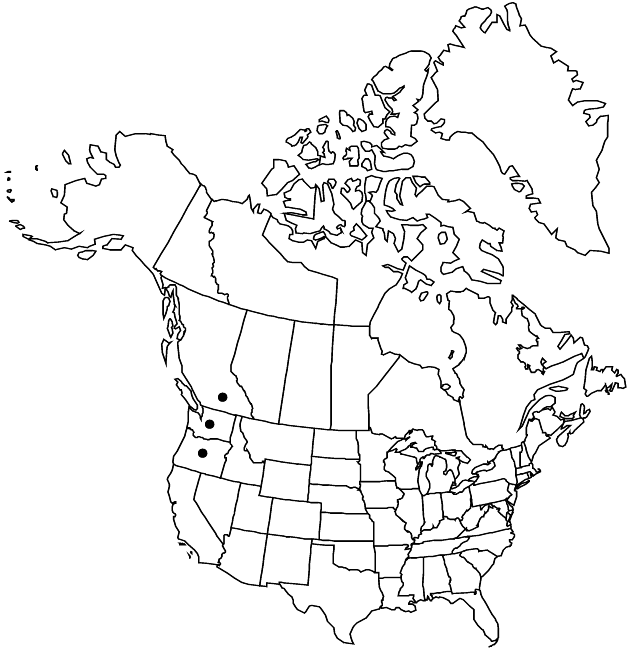Difference between revisions of "Grindelia integrifolia"
in A. P. de Candolle and A. L. P. P. de Candolle, Prodr. 5: 315. 1836.
FNA>Volume Importer |
imported>Volume Importer |
||
| (6 intermediate revisions by 2 users not shown) | |||
| Line 1: | Line 1: | ||
{{Treatment/ID | {{Treatment/ID | ||
|accepted_name=Grindelia integrifolia | |accepted_name=Grindelia integrifolia | ||
| − | |accepted_authority= | + | |accepted_authority=de Candolle |
|publications={{Treatment/Publication | |publications={{Treatment/Publication | ||
|title=in A. P. de Candolle and A. L. P. P. de Candolle, Prodr. | |title=in A. P. de Candolle and A. L. P. P. de Candolle, Prodr. | ||
|place=5: 315. 1836 | |place=5: 315. 1836 | ||
|year=1836 | |year=1836 | ||
| + | }} | ||
| + | |special_status={{Treatment/ID/Special_status | ||
| + | |code=E | ||
| + | |label=Endemic | ||
}} | }} | ||
|basionyms= | |basionyms= | ||
| Line 23: | Line 27: | ||
|elevation=0–200 m | |elevation=0–200 m | ||
|distribution=B.C.;Oreg.;Wash. | |distribution=B.C.;Oreg.;Wash. | ||
| − | |discussion=<p>But for the stipitate-glandular apices of the phyllaries, plants of Grindelia integrifolia are very much like some plants treated here in G. hirsutula. Taxonomic status for plants that have been called G. integrifolia should be reconsidered.</p> | + | |discussion=<p>But for the stipitate-glandular apices of the phyllaries, plants of <i>Grindelia integrifolia</i> are very much like some plants treated here in <i>G. hirsutula</i>. Taxonomic status for plants that have been called <i>G. integrifolia</i> should be reconsidered.</p> |
|tables= | |tables= | ||
|references= | |references= | ||
| Line 32: | Line 36: | ||
-->{{#Taxon: | -->{{#Taxon: | ||
name=Grindelia integrifolia | name=Grindelia integrifolia | ||
| − | + | |authority=de Candolle | |
| − | |authority= | ||
|rank=species | |rank=species | ||
|parent rank=genus | |parent rank=genus | ||
| Line 46: | Line 49: | ||
|publication title=in A. P. de Candolle and A. L. P. P. de Candolle, Prodr. | |publication title=in A. P. de Candolle and A. L. P. P. de Candolle, Prodr. | ||
|publication year=1836 | |publication year=1836 | ||
| − | |special status= | + | |special status=Endemic |
| − | |source xml=https:// | + | |source xml=https://bitbucket.org/aafc-mbb/fna-data-curation/src/2e0870ddd59836b60bcf96646a41e87ea5a5943a/coarse_grained_fna_xml/V19-20-21/V20_992.xml |
|tribe=Asteraceae tribe Astereae | |tribe=Asteraceae tribe Astereae | ||
|genus=Grindelia | |genus=Grindelia | ||
Latest revision as of 21:07, 5 November 2020
Perennials, 20–80(–100+) cm. Stems erect, stramineous to red-brown, villous and/or stipitate-glandular (at least distally). Cauline leaf blades lanceolate or lance-attenuate (broadest proximal to midpoints), 35–70(–90) mm, lengths 2–4(–10) times widths, bases usually clasping (± cordate), margins usually entire, rarely serrate to denticulate (teeth apiculate), apices acute to attenuate, faces stipitate-glandular. Heads in corymbiform arrays or borne singly. Involucres broadly urceolate to globose, 8–12 × 12–20+ mm (usually subtended by leaflike bracts). Phyllaries in 5–6 series, spreading to appressed, linear or to lance-linear or lanceolate, apices slightly recurved, straight, or incurved, filiform to subulate, ± stipitate-glandular, sometimes moderately resinous as well. Ray florets 10–35; laminae 8–15(–20) mm. Cypselae stramineous, 3–5 mm, apices coronate to knobby, faces smooth or striate; pappi of 2–3 contorted to curled, usually smooth, sometimes barbellulate, subulate scales 2.5–4 mm, shorter than disc corollas. 2n = 12.
Phenology: Flowering Jun–Sep.
Habitat: Meadows, ditches, marshlands
Elevation: 0–200 m
Distribution

B.C., Oreg., Wash.
Discussion
But for the stipitate-glandular apices of the phyllaries, plants of Grindelia integrifolia are very much like some plants treated here in G. hirsutula. Taxonomic status for plants that have been called G. integrifolia should be reconsidered.
Selected References
None.